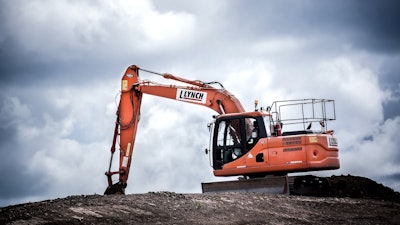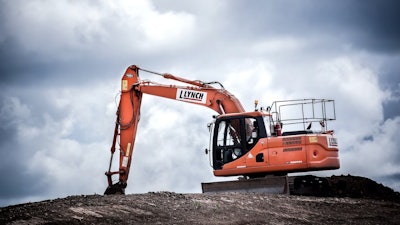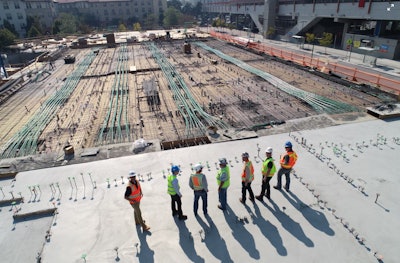
Vehicle electrification remains a hot topic. In his annual letter to stakeholders, BlackRock’s CEO Larry Fink asserted, “The next 1,000 unicorns won’t be search engines or social media companies. They’ll be sustainable, scalable innovators who help the world decarbonize and make the energy transition affordable for all consumers.”
That includes the construction industry, a field where the use of electric vehicles is on the rise. Off-highway electric vehicles are witnessing high adoption across various industries globally as governments aim to reduce carbon emissions and offer rebates and tax incentives to deploy these types of vehicles on construction sites.
From excavators to loaders, to forklifts and more, construction pros are using electric heavy machinery. They are reaping some of its benefits: fewer fumes, noise, emissions, and decreased energy costs and operating costs. While electrification in construction equipment is expected to grow globally, barriers remain.
Many incumbent vehicle manufacturers and component suppliers are grappling with how they can best respond to an increased demand for electric vehicles in the construction industry, disrupting their traditional product offers and business models in the pursuit of maintaining market share in this once-in-a-generation market shift.
While the path forward is necessarily different for every company, construction equipment manufacturers that focus on these three key areas—customer value creation, product and technology planning and development, and financial performance and potential—will do the best at speaking to a growing segment of construction professionals looking to electrify job sites.
Customer Value Creation: Partner with Customers to Develop End-to-End Solutions
Many fleets have made bold sustainability commitments and goals – and at the same time remain committed to improving total cost of ownership, end-customer satisfaction, and their own employees’ satisfaction. To deliver against all these goals, much more than the vehicle’s power-pack will have to change.
No one player has “cracked the case” on an end-to-end electrification solution—but those who focus on first becoming experts in their customers’ end-to-end production processes are the likely winners.
Partnering with customers to understand goals and priorities and to define jointly how their end-to-end processes can evolve for electrified vehicles will be key to achieving market adoption. For example: How will electricity be generated and transmitted (for example, at the depot or the jobsite)? How will EV drivetrains impact vehicle uptime and duty-cycle performance, and what compromises may need to be made? Where will vehicles be charged (at depots or during routes)? How will vehicles be repaired and maintained to ensure uptime—and by whom?
This range of issues spanning customers’ processes end-to-end and how manufacturers and suppliers will address these needs can be tackled with a master plan that clarifies a wide range of issues—with the flexibility to evolve as more is learned.
Product & Technology: Embrace Optionality & Be Willing to Partner in Testing Demonstration Units
With hundreds of millions of dollars already being invested in new electrification technology and product development, it is understandable that CTOs, R&D leaders, and product planners want to “pick a winner” because that has been the norm for past OEM R&D cycles.
However, distinct vocations with disparate duty-cycle requirements—for example, mining and construction equipment—necessitate offering a portfolio of different solutions to address distinct customer segment needs and ensure optionality as demand evolves.
Managing this complexity requires technologists and product planners to develop roadmaps that integrate the “pull” of the market (requirements and drivers shared by customers) with the “push” of technology evolution (capabilities and readiness/feasibility) into a set of product plans, visions and action plans that indicate the pace of development and when critical issues will be addressed. Off-highway electric vehicles are witnessing high adoption across various industries globally as governments aim to reduce carbon emissions and offer rebates and tax incentives to deploy these types of vehicles on construction sites.Treacy & Company by Cherry Bekaert
Off-highway electric vehicles are witnessing high adoption across various industries globally as governments aim to reduce carbon emissions and offer rebates and tax incentives to deploy these types of vehicles on construction sites.Treacy & Company by Cherry Bekaert
Choosing to develop multiple technologies and products of course has investment implications. Building in this optionality necessitates embracing customers and ecosystem partners (such as suppliers and technology affiliates) in the development process to test and iterate demonstration units and prototypes jointly in concept validation, in each target beachhead market, ahead of advancing into the production process and factory validation stage gates.
Financial: Understand How Profit Pools Will Change and Communicate Strategy & Timelines to Temper Investors’ Expectations
Investors recognize the imperative to shift to electrified vehicles over the next decade and they are also beginning to recognize what manufacturers and suppliers have known for years: there is no one-to-one conversion of profit pools.
 Companies that act quickly and boldly rethink how they can position themselves to deliver customer value will be rewarded with favorable perceptions among investors.Treacy & Company by Cherry Bekaert
Companies that act quickly and boldly rethink how they can position themselves to deliver customer value will be rewarded with favorable perceptions among investors.Treacy & Company by Cherry Bekaert
The journey to mass-market EV adoption in the construction industry is still long and far from over. While it comes with many challenges, companies that act quickly and boldly rethink how they can position themselves to deliver customer value will be rewarded with favorable perceptions among investors. And construction professionals will reap the benefits, with cleaner, safer and more efficient jobsites.
Hans Mueller-Schrader is an engagement leader for Treacy & Company.
Richard Schwartz is a partner at Treacy & Company.
















